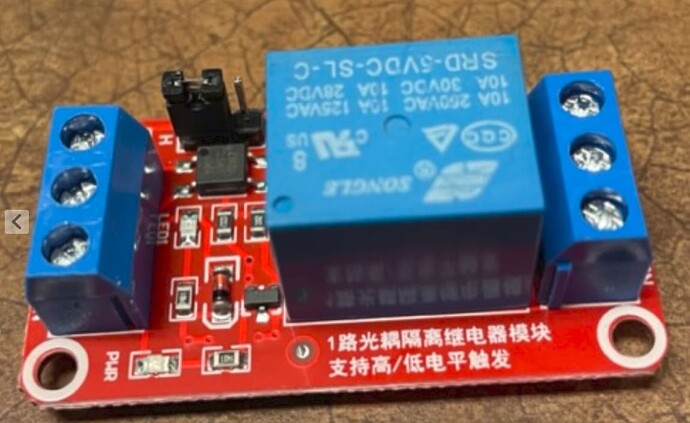I'm using some of the prolific "hiletgo relay modules" you can find on amazon, etc (image below). I'm using the 5V version which claims to be optoisloated. It has 3 inputs, V+, V- and Input. The input appears to control the opto which in turn switches the V+/- to the relay coil. However I don't see any flyback diode on that coil. There's what appears to be a zeener in there but I think that's more for the LED indicator part of the circuit (not sure).
I can solder on a flyback diode, but wondered if anyone else had encountered this?
Also, I am powering a Mega board with a USB cable that provided power only. Long story on the whys for that, but I'm essentially using a the USB port as a power jack. I know the USB port is limited to 500mA. This relay module pulls about 70-80mA. I have 5 other (different) relays that are truly opto isolated and they are set to pull about 8mA max from their respective digital pins (40mA total on those). I have 2 servo style PWM outputs that control externally powered motor controllers, not sure what their current draw is. Not much I don't think.
My question is, is it a problem to power the Hiletgo relay module (V+/-) vi the 5V rail from the Mega? I'm using a breakout hat with terminals for all the Mega pins, so I have the extra 5V connection points..
Edit, actual module, in lieu of stock photo I used:
